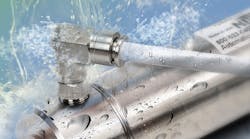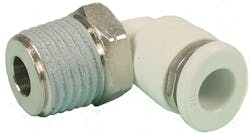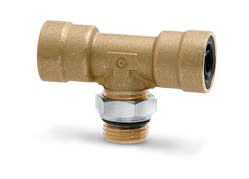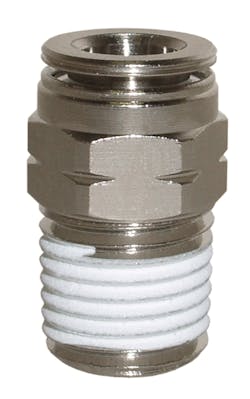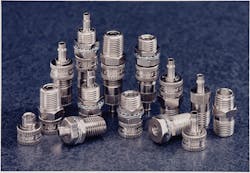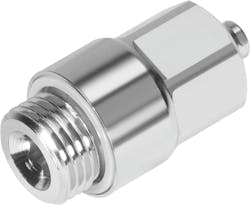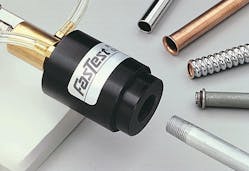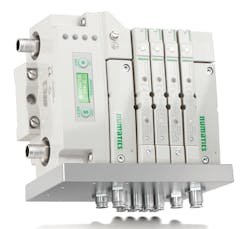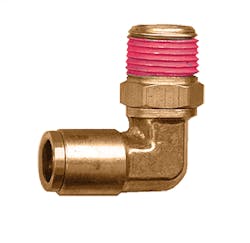This file type includes high resolution graphics and schematics when applicable.
Pneumatic connectors may be underappreciated in the world of air-circuit design, but they’re nonetheless indispensable for efficient and leak-free performance. Here’s a look at some innovative connectors that offer attributes such as durability, corrosion resistance, high flow capacity, light weight, low cost, and ease-of-assembly.
Stainless Steel Pneumatic Fittings
Pneumatic Push-in Fittings
Fittings with Protective Coating
Transportation-grade Fittings
Rugged Metal Fittings
C.Matic, +39 0362 805246, www.cmatic.it
Quick-connect Fittings
Clean-design Fitting
Leak-free Plug
Pneumatic Test Connectors
Panel-mount Adapter Plate
Brass push-to-connect fittings, which offer quick assembly and full-flow design, will find use in polyethylene, nylon, and polyurethane tubing. Styles include bulkhead unions, tube-to-pipe connectors, 90° elbows, and tees in a variety of versions. Depending on the part, sizes can range from â
- to ½-in. tube and 1/16- to ½-in. pipe. Pressure ratings range from 250 to 350 psi.
Fairview Fittings, (800) 688-4088, www.fairviewfittings.com
Push-to-connect Pneumatic Fittings
This file type includes high resolution graphics and schematics when applicable.
